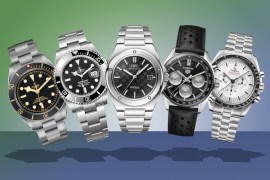Best iPhone in 2025 ranked from best to worst
How to pick your perfect Apple handset

Knowing which the best iPhone used to be easy – you just had to choose the colour and the storage capacity. It was guaranteed to be among the best smartphones on sale. But now, things are not so simple. From Mini to Plus to Pro to Pro Max, Apple’s flagship phones ship in more variants than ever before.
And just to muddy the waters further, the mobile maker still sells a few of its former headline handsets from previous generations, as well as the entry-level SE for buyers on a budget.
So there’s an Apple smartphone for everyone. The tricky thing is knowing how to pick it. Not sure where to start? We’ve set out the good, the bad and the things to note about the key iPhone models currently available to buy to help you decide.
Note that we’ve left the iPhone 15 Pro and Pro Max in this list for now. They’ve gone end-of-life and have been replaced by the 16 Pro and Pro Max. But they’re still available from certain vendors.
Why you can trust Stuff: Our team of experts rigorously test each product and provide honest, unbiased reviews to help you make informed decisions. For more details, read how we test and rate products.
The best iPhone you can buy today:
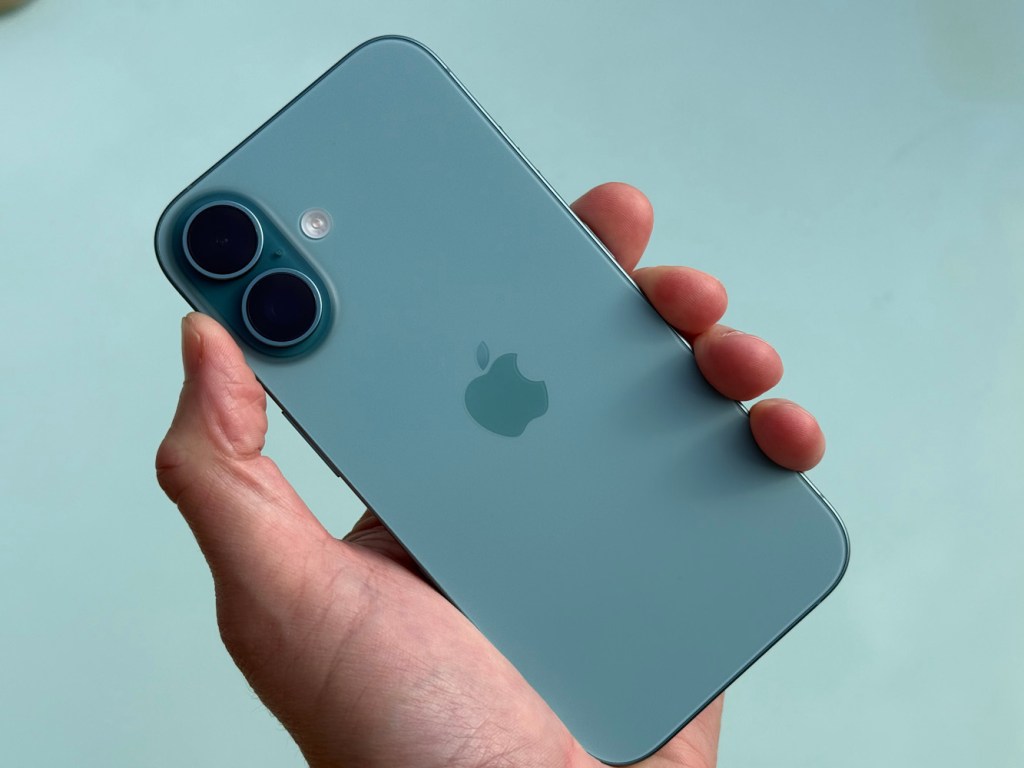
1. iPhone 16
Stuff Verdict
A pleasing update to a winning formula that’s a much more appealing combo than spending more to go Pro.
Pros
- Makes the Pro look poor value
- The telephoto is very welcome
- Great that Camera Control has made it to the standard model as well as the Pro
- Long-lasting battery
Cons
- We’d like some brighter colors please
- 60Hz refresh rate is old news
- Camera Control can be fiddly
| Screen | 6.1in 2556×1179 Super Retina XDR OLED HDR at 460ppi |
| CPU | Apple A18 |
| Memory | 8GB |
| Cameras | 48MP ƒ/1.6 main, 12MP ƒ/2.2 ultra wide rear; 12MP ƒ/1.9 front |
| Storage | 128GB/256GB/512GB |
| Operating system | iOS 18 |
| Battery | 3561mAh |
| Dimensions | 148x72x7.8mm (5.81 x 2.82 x 0.31 in), 170g (6oz) |
Apple’s iPhone 16 for 2024 feels like a solid mix of refinement and fresh features, but we can’t help but notice the missing piece: Apple Intelligence, the much-touted AI-powered suite. While we’re eager to see what this feature can really do, it’s rolling out so slowly that most of us will still be waiting for the full experience months after launch. For now, though, there’s plenty else to explore.
What catches our eye right away is the new Camera Control. It’s great to see Apple bringing this customisable shutter button to the standard models – not just the Pros. We like that it opens the camera instantly and lets us tweak settings with ease, whether we’re zooming in or adjusting the tone. The 48MP main camera with 2x telephoto is a definite step up, and we’re loving the range it offers for our shots.
Performance-wise, Apple’s A18 chip is blazing fast, with no lag even when we’re multitasking heavily. The slightly larger battery gives us more screen time, enough to comfortably last a day and then some. However, we’re let down by the lack of ProMotion’s smooth 120Hz refresh rate; a display like this really deserves better, especially when Apple’s competitors have been stepping up in that area.
iOS 18 has some standout tweaks too. With RCS messaging and the reworked Control Center, we’re finding it more customisable than ever. All in all, the iPhone 16 impresses with many Pro-like features, even if Apple Intelligence isn’t here to wow us just yet. For the price, it’s a strong, well-rounded package.
- Read more: iPhone 16 review

2. Apple iPhone 16 Pro Max
Stuff Verdict
Not an update that makes you want to throw a party, but the iPhone 16 Pro Max’s power, camera and battery life are so good it’s hard to imagine anyone not being quietly impressed.
Pros
- Ludicrously powerful
- Impressive new camera smarts
- Outstanding battery life
Cons
- Unfinished software
- Now even bigger and bulkier
- Boring colours
| Screen | 6.9in 2868×1320 OLED HDR at 460ppi |
| CPU | Apple A18 Pro |
| Memory | 8GB |
| Cameras | 48MP ƒ/1.78 main, 48MP ƒ/2.2 ultra wide, 12MP ƒ/2.8 telephoto (5× optical zoom in) rear; 12MP ƒ/1.9 front |
| Storage | 256GB/512GB/1TB on-board |
| Operating system | iOS 18 |
| Battery | 4685 mAh |
| Dimensions | 163×77.6×8.25mm (6.42×3.06×0.32in), 227g (7.99oz) |
The iPhone 16 Pro Max hits familiar marks – powerful, huge display, killer battery – but it’s also clear Apple is playing it safe with this year’s model. Yes, it’s incredibly fast, boasting Apple’s A18 Pro chip, which breezes through high-end games and heavy multitasking. But what sets it apart, truly? Sure, it has a 6.9-inch display with barely-there bezels, and that’s stunning. Yet, it doesn’t exactly make us want to celebrate in the streets.
One thing we’re really enjoying here is the improved camera, especially for close-ups and action shots. The 48MP ultrawide snaps are razor-sharp, and with the new 5x optical zoom, we’re capturing shots that would’ve been a pixelated mess on older models. We’re also having fun with the new slow-motion effects; there’s something quite epic about watching everyday moments in cinematic, Matrix-esque slo-mo. Plus, the four-mic array and audio controls give videos that extra polish.
But all that goodness has a few trade-offs. This thing is bulky – it’s noticeably bigger and heavier than the last Pro Max. If you’re coming from an iPhone 13 Pro Max, you’ll feel it. And while the new titanium frame is supposed to be tougher, that extra durability won’t stop it from shattering if it takes a serious tumble.
As for the much-touted Apple Intelligence feature, it’s almost there. This year’s iOS 18 gives us a glimpse, but full AI functionality is still waiting in the wings. The new Camera Control button is cool but takes some getting used to. If you’re looking to save a few quid and can live without a couple of these extras, the standard iPhone 16 might actually suit you better.
So, is this the ultimate iPhone? Technically, yes. But unless you’re after serious camera upgrades or are a performance junkie, we’d suggest going with the non-Pro version.
- Read more: iPhone 16 Pro Max review
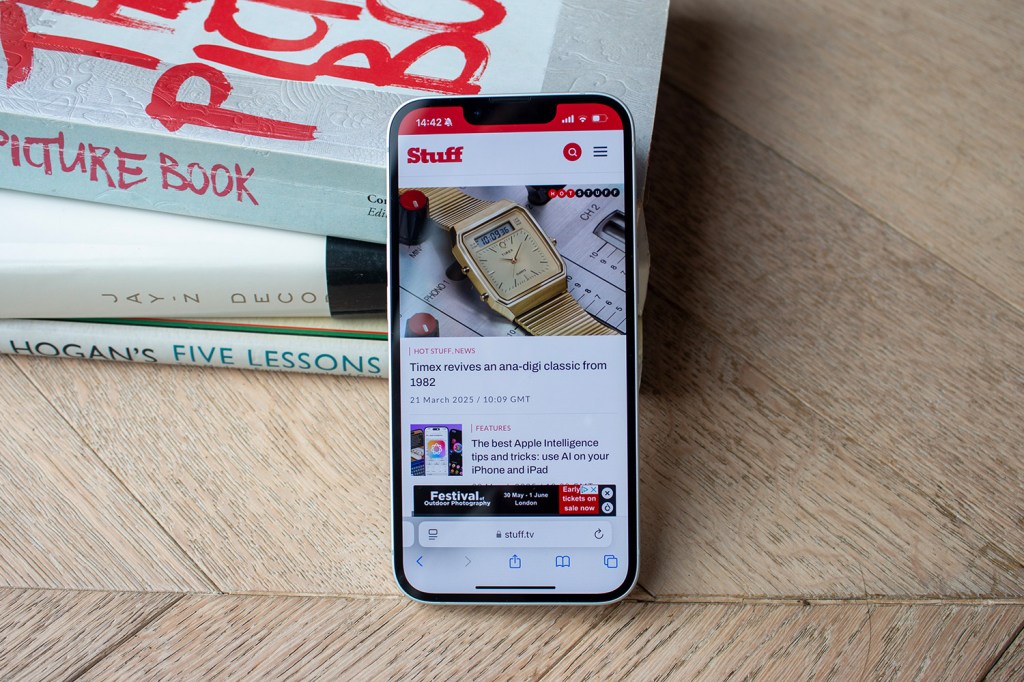
3. iPhone 16e
Stuff Verdict
A lightweight design, solid performance, consistent camera and brilliant battery make the iPhone 16e a great value option for those wanting a (slightly) less expensive iPhone.
Pros
- Lightweight and updated design
- Superb battery and performance
- Great single-lens camera
Cons
- No MagSafe
- 60Hz display
- Limited colour options
| Screen | 6.1in, 2532 x 1170 OLED w/ 60Hz |
| CPU | Apple A18 |
| Memory | 8GB |
| Cameras | 48MP rear / 12MP front |
| Storage | 128/256/512GB on-board |
| Operating system | iOS 18 |
| Battery | 4005mAh |
| Dimensions | 147x72x7.8mm (5.78×2.82×0.31in), 167g (5.88ounces) |
The iPhone 16e might not be Apple’s cheapest phone ever, but it strikes a smart balance between price and performance. At £599/$599, it’s not exactly impulse-buy territory – but it’s £200 less than the standard iPhone 16, and after weeks of testing it in the real world, we think it’s worth your attention.
Design-wise, it finally drags Apple’s entry-level offering into the modern era. Gone are the home button and chunky bezels. We’ve been using it on the go, and the flat edges, light 167g build and compact size made it a joy to handle – even one-handed on a packed train.
The OLED screen is vibrant and sharp, with deep blacks and rich colours. Watching Netflix on the commute looked great, even if the 60Hz refresh rate meant scrolling Twitter felt a bit less fluid than we’re used to on Android rivals. Outdoors in bright sun, it held up fine – not the brightest we’ve tested, but never unreadable.
We took the 16e on a long weekend trip and it easily lasted from breakfast to bedtime with around 40% battery left by the end of the day. That’s with maps, photos, Spotify and plenty of WhatsApp. Charging is slower than Pro models, but we didn’t find it annoying.
The single 48MP camera consistently delivered. Portraits of friends popped, low-light shots of city streets had detail without noise, and zoomed-in photos of our dog at the park looked great. Compared to the Pixel 8a, the iPhone 16e’s images had better colour accuracy and dynamic range.
No MagSafe is a downer – we missed using our car mount and magnetic charger. And yes, a 120Hz screen would’ve been nice. But for most people, the iPhone 16e nails the essentials and feels like a flagship in everyday use.
- Read more: iPhone 16e review

4. iPhone 15 Pro
Stuff Verdict
More camera cleverness, USB-C support and a new Titanium build help this year’s Pro stand apart from the mainstream iPhone.
Pros
- Stupidly powerful for a phone
- Takes fantastic photos
- USB-C connectivity is long overdue
Cons
- Misses out on Pro Max’s telephoto skills
- USB 3 rather than Thunderbolt
- Not the most exciting colour options
| iPhone 15 Pro specs | |
|---|---|
| Display | 6.1in Super Retina XDR OLED, 2556×1179, 120Hz |
| Processor | Apple A17 Pro |
| Memory | 8GB RAM |
| Storage | 128GB-1TB |
| Software | Apple iOS 17 |
| Camera | 48MP + 12MP + 12MP (rear) 12MP (front) |
| Dimensions | 147x71x8.3mm, 187g |
You’d expect a lot from the iPhone 15 Pro. You’d want a competitor-crushing display, a powerful chip, and a camera that could feasibly shoot the next Avatar movie. For the most part, the iPhone 15 Pro really does pack a lot into its 6.1in expensive Titanium frame.
The three rear snappers improve on the already stellar camera offering the iPhone 14 Pro gave us, with genuinely impressive zoom abilities up to 3x – but you’ll need to step up to the Pro Max to get a 5x telephoto zoom. That’s not the same on the 16 Pro though, which also has the 5x capability. The customisable action button adds a host of new ways to interact with apps, and swapping Lightning for USB-C should simplify your cable collection. Open up the bonnet and you’ll find a host of upgrades, including an A17 Pro chip which makes the Pro run as smooth as silk.
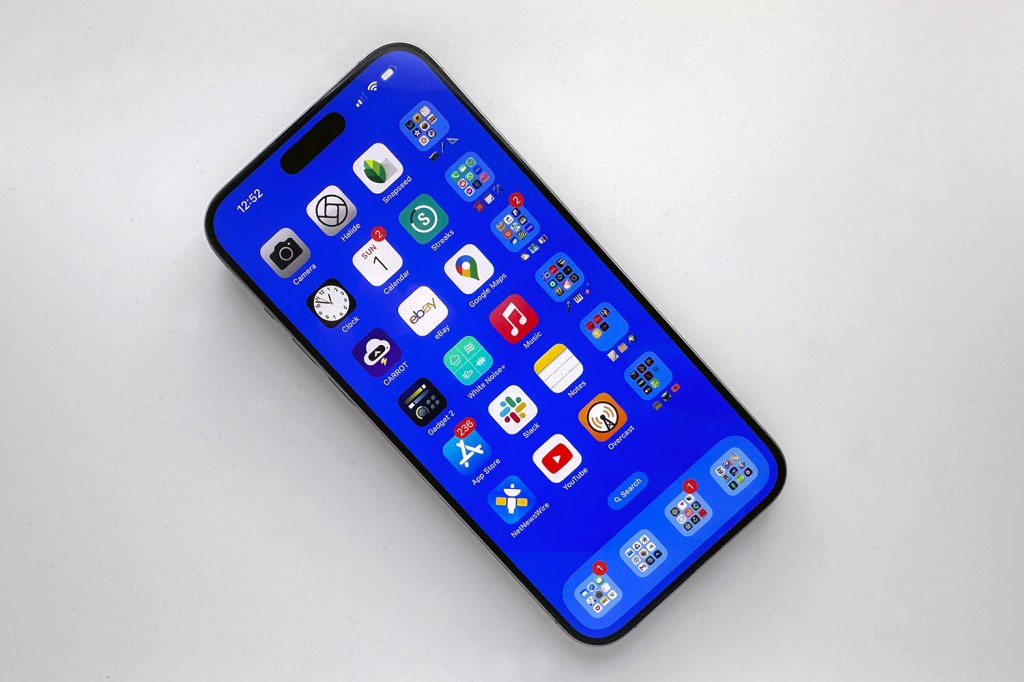
5. iPhone 15 Pro Max
Stuff Verdict
The kind of advance that more makes you sagely nod approval rather than whoop for joy, but you’d have to be joyless yourself to not love the new camera smarts and the potential from USB-C
Pros
- Great camera improvements
- USB-C connectivity
Cons
- No desktop mode
- USB 3 rather than Thunderbolt
| iPhone 15 Pro Max specs | |
|---|---|
| Display | 6.7in Super Retina XDR OLED, 2796×1290, 120Hz |
| Processor | Apple A17 Pro |
| Memory | 8GB RAM |
| Storage | 256GB-1TB |
| Software | iOS 17 |
| Camera | 48MP+12MP+12MP rear, 12MP front |
| Dimensions | 160x77x8.3mm, 221g |
On paper, the Apple iPhone 15 Pro Max is the firm’s best phone. It moves things on with a titanium body, customisable action button, and an impressive camera revamp led by a 5x optical zoom telephoto – all of which further differentiate this most premium of phones from the standard iPhone. But it’s also big, heavy and expensive.
Do the new features make the iPhone 15 Pro Max worth the cheddar? In truth, it depends. If you own an existing 14 Pro or Pro Max, then you should probably hang on to it. You’ll find little difference here. If you’re on a 13 Max or earlier, though, then there is enough in the iPhone 15 Pro Max to make it a worthwhile purchase.
- Read more: iPhone 15 Pro Max review
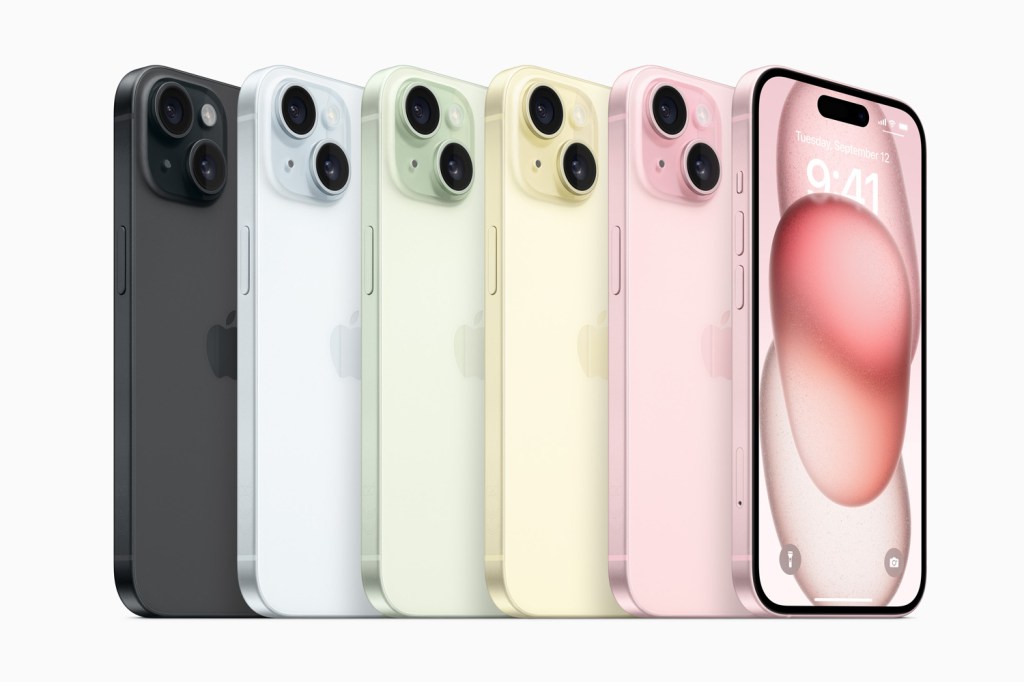
6. iPhone 15 / 15 Plus
Stuff Verdict
The best iPhones of 2023 are found at the top and bottom of the range. Most people will be well served with the regular 15, while those after more screen should pick up a Plus.
Pros
- Dynamic island across the range
- Corking cameras
- Ample performance and decent battery life
Cons
- Screen stuck at 60Hz
- USB 3 rather than Thunderbolt
- Recharging speeds sluggish compared to Android world
| iPhone 15/ 15 Plus specs | |
|---|---|
| Display | 6.1in/6.7in Super Retina XDR OLED, 2556×1179/2796×1290, 60Hz |
| Processor | Apple A16 Bionic |
| Memory | 6GB RAM |
| Storage | 128-512GB |
| Software | iOS 17 |
| Camera | 48MP+12MP (rear), 12MP (front) |
| Dimensions | 148x72x7.8mm, 171g / 161x78x7.8mm, 201g |
Comfortably the sweet spot of the 2023 iPhone line-up for most people, the iPhone 15 and 15 Plus bring the A16 Bionic CPU from last year’s Pro models so aren’t short on power. They also gain a Dynamic Island in place of the old notch, and make the switch from Lightning to USB-C.
The rear cameras have been upgraded with a much higher pixel count on the main snapper, and the display brightness has been boosted too. Battery life has climbed a little, but not dramatically. If you want a bigger display and battery the iPhone 15 Plus looks like good value compared to the smaller iPhone 15 Pro, and everyone else will find the standard iPhone 15 perfectly pocketable. It’s a shame Apple hasn’t upped the screen refresh rate from 60Hz, though – you’ll still need to step up to a Pro for that.
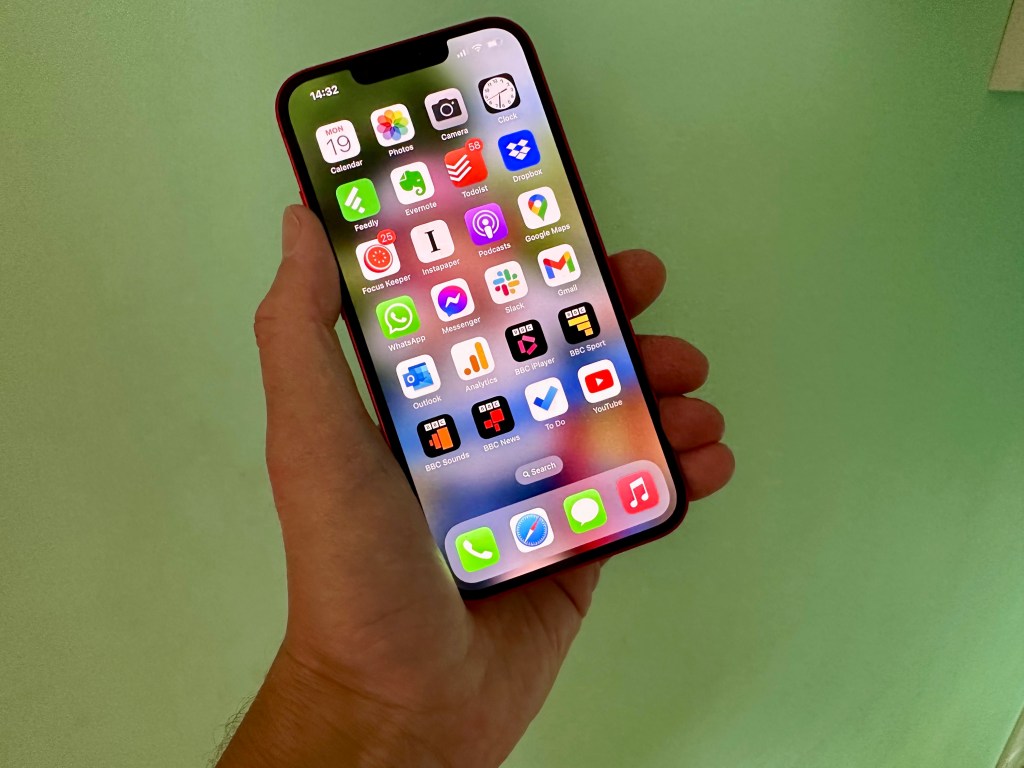
7. iPhone 14 / 14 Plus
Stuff Verdict
The Apple iPhone 14 is a superb smartphone even though the minimal hardware upgrades take the shine off – potential purchasers will want to consider older models as a result.
Pros
- Still an incredible smartphone
- Brilliant battery life gets a bit better
Cons
- Last year’s Pro hardware
- Wireless charging slow by modern standards
| iPhone 14/ 14 Plus specs | |
|---|---|
| Display | 6.1in Super Retina XDR OLED, 1170 x 2532 pixels |
| Processor | Apple A15 Bionic |
| Memory | 6GB |
| Storage | 128GB, 256GB, 512GB |
| Software | iOS 16 |
| Camera | 12MP+12MP (rear) 12MP (front) |
| Dimensions | 146.7 x 71.5 x 7.8 mm, 172 g |
Now the middle child in Apple’s mainstream iPhone line-up, the iPhone 14 and 14 Plus were minor upgrades over the previous generation. Both kept the same A15 Bionic CPU, both offered the same three storage tiers, and both had a pair of camera lenses at the rear. Wider aperture lenses and improved image processing means it takes a better picture than the iPhone 13, though.
The biggest addition was emergency satellite communication, which is more a nice to have if you plan on adventuring into the wilderness than a reason for most shoppers to buy one. We’d suggest staying away from the regular iPhone 14 now if you’re on a budget – the iPhone 13 is the better buy – but the iPhone 14 Plus is still worth considering if you want a bigger screen, as the iPhone 13 Plus has been discontinued.
- Read more: Apple iPhone 14 review
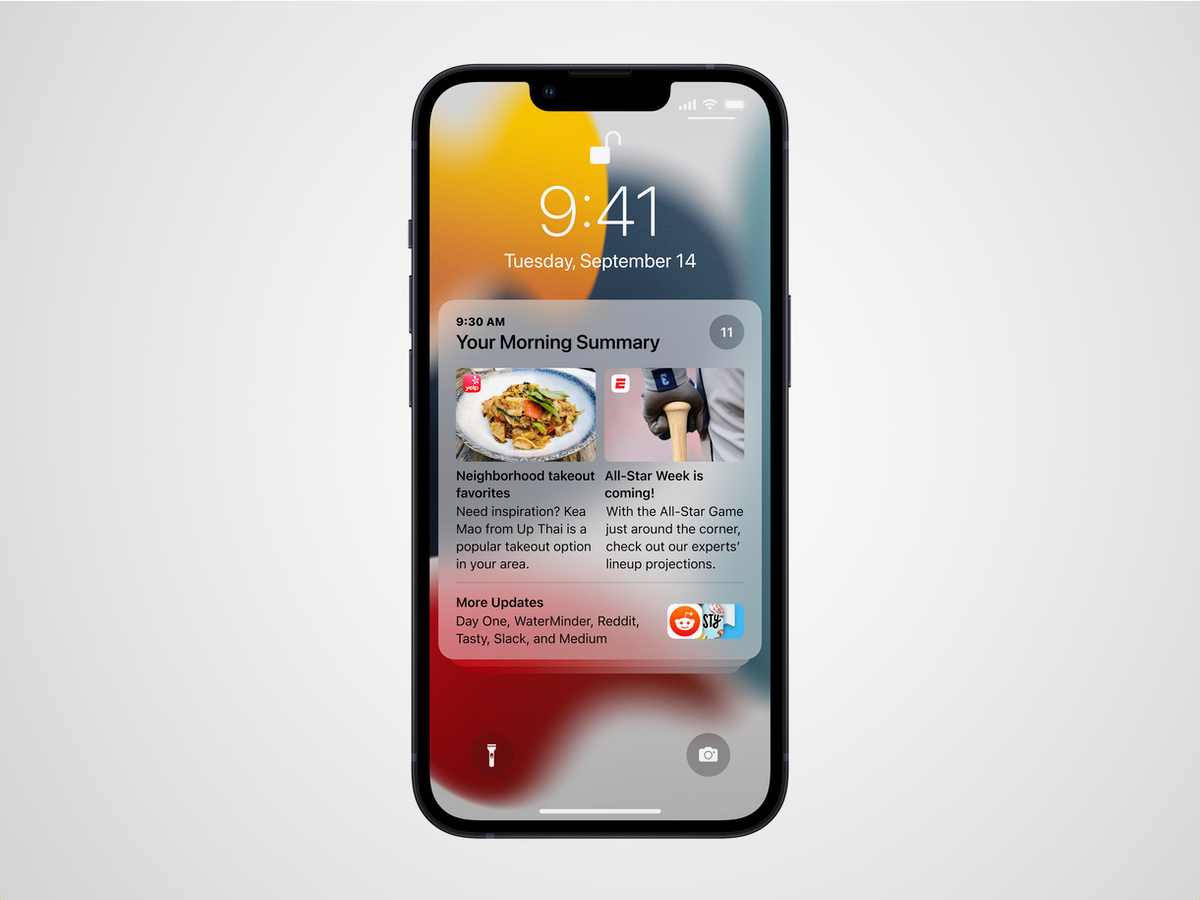
8. iPhone 13
Stuff Verdict
The Apple iPhone 13 is no poor relation to the Pro equivalent – there’s so much to love about it. It’s not a revelation after iPhone 12, but it does enough to be a step onward.
Pros
- Excellent battery life
- Welcome camera improvements
- So much power
Cons
- No macro or telephoto
- Lightning rather than USB-C
- iPhone 12 offers most of the same for less
| iPhone 13 specs | |
|---|---|
| Display | 6.1in Super Retina XDR OLED, 1170 x 2532 pixels |
| Processor | Apple A15 Bionic |
| Memory | 4GB |
| Storage | 128GB, 256GB, 512GB |
| Software | iOS 15 |
| Camera | 12MP + 12MP (rear) 12MP (front) |
| Dimensions | 146.7 x 71.5 x 7.7 mm, 174 g |
Following the iPhone 12 was always going to be a tough act. The iPhone 13 brought several technical improvements over its predecessor, but besides a slightly wider notch, it looked identical. Now, though, it’s the entry-point for the main iPhone range, with Apple having discontinued everything older bar the budget-minded iPhone SE (more on that below).
You get great performance from the A15 Bionic chip, respectable battery life, a brighter screen and a minimum of 128GB of storage. A lead camera sensor with larger pixels also mean the iPhone 13 takes better photos than older-gen iPhone models.
If you’re buying your first Apple handset, you’ll find very little to be disappointed about.
- Read more: Apple iPhone 13 review
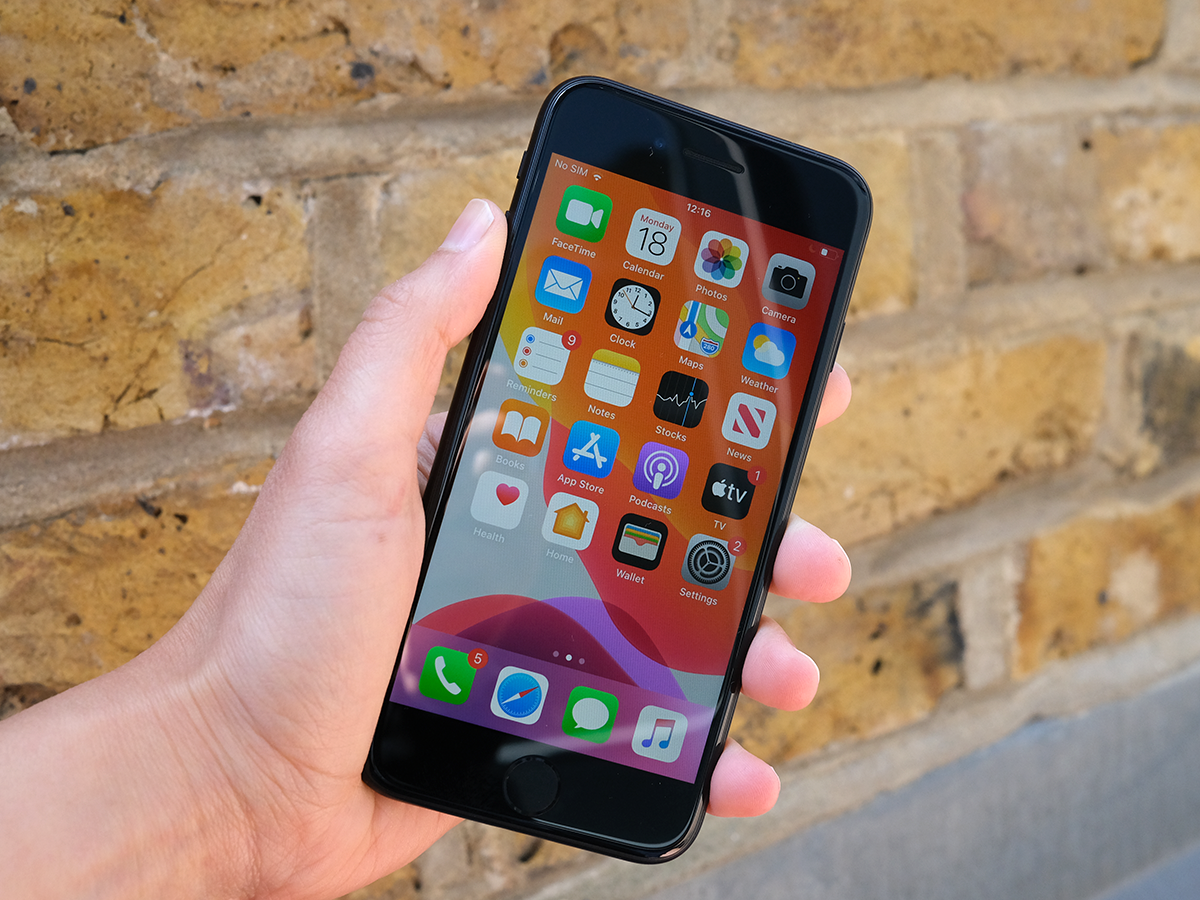
9. iPhone SE
Stuff Verdict
A form factor favourite returns rejuvenated. Apple’s iPhone SE is the best small phone you can buy.
Pros
- Great battery life
- Compact without compromise
- It’s a bargain… for an iPhone
Cons
- 16GB? Come on
- Old design
- No 3D Touch
| iPhone SE specs | |
|---|---|
| Display | 4.7in Retina IPS LCD, 750 x 1334 pixels |
| Processor | Apple A15 Bionic |
| Memory | 4GB |
| Storage | 64GB, 128GB, 256GB |
| Software | iOS 15.4 |
| Camera | 12 MP (rear) 7MP (front) |
| Dimensions | 138.4 x 67.3 x 7.3 mm, 144 g |
A minor upgrade for Apple’s entry-level option, the third-gen SE is still styled like an iPhone 8 – complete with a dated 4.7in LCD display, plus chunky bezels above and below. Security continues to be handled by a Touch ID sensor in the Home button and the shell remains an aluminium and glass affair, although the back panel is tougher than before.
Inside is Apple’s A15 Bionic chip – shared with the iPhone 13 – which gives the updated SE plenty of power to zip through apps, games and imaging tasks. The camera kit is still limited to a single 12MP sensor on the rear, but that fresh silicon translates into computational improvements, including support for Smart HDR 4, Live Text content detection and improved low-light video.
Apple has thankfully addressed one of the biggest drawbacks of the second-gen model: battery life. The latest SE is good for up to 15 hours of video playback. Also new is support for 5G, which brings the cheapest iPhone’s connectivity bang up to date.
Provided you don’t mind the overfamiliar form factor and mediocre display, the SE offers a lot of handset for the cash – especially if you’re upgrading from an iPhone 8 or earlier.


